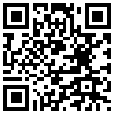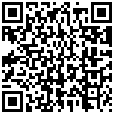要約
ダウンロード Docx
もっと読む
The Rassemblement Démocratique Africain (RDA) was founded in 1946. It was a Pan-African political group that aimed to unite anti-colonial movements in French West Africa and Equatorial Africa. In Guinea, the local branch, led by Ahmed Sékou Touré, played a key role in pushing for full independence. They believed that true freedom required a complete break from colonial rule. Andrée witnessed the harsh methods used by the colonial government against RDA members, including harassment, arrests, and violence. In response, she supported the movement financially, providing resources to protect imprisoned activists. Her work angered the white community, but it did not shake her determination to fight for African independence. Andrée Blouin’s political life took a transformative turn one morning, which she called “a second birth,” when she saw a poster of Sékou Touré in a modest African shop. She reflected, “It was not just a photograph at which I stared; a compelling presence was there. A spirit, a light, a recognition – I hardly know what to call it, came over me… It was at this moment that I made the commitment to stand with my black brothers and sisters that, ever since, has meant more to me than my life.” In 1958, Andrée joined the RDA’s campaign for Guinea’s full independence. She traveled hundreds of miles across the country, organizing rallies and delivering stirring speeches from platforms that were sometimes little more than a few crude planks on stools. Andrée Blouin founded the Women’s Movement for African Solidarity. The Movement’s platform works to achieve the following goals: promote literacy among women of all ages, raise awareness of health and hygiene, combat alcoholism, advocate for women’s rights, protect abandoned women and children, and support the social progress of Africans. Because of Andrée Blouin’s important role in the Congolese independence movement, she became Chief of Protocol under the Prime Minister, His Excellency Patrice Lumumba, after Congo gained independence on June 30, 1960. In this position, she not only drafted speeches, but also served as a diplomatic liaison with European nations. The two worked so closely together that the press dubbed them “team Lumum-Blouin.”Nearly four decades have gone by since Andrée Blouin’s passing, yet her legacy continues to inspire countless individuals. In Kinshasa, the capital of the Democratic Republic of the Congo, there is a cultural center named after her.














